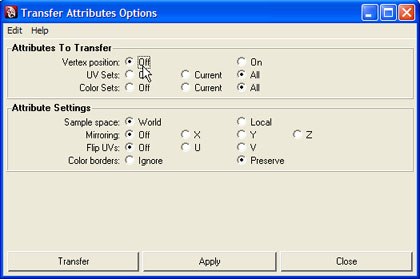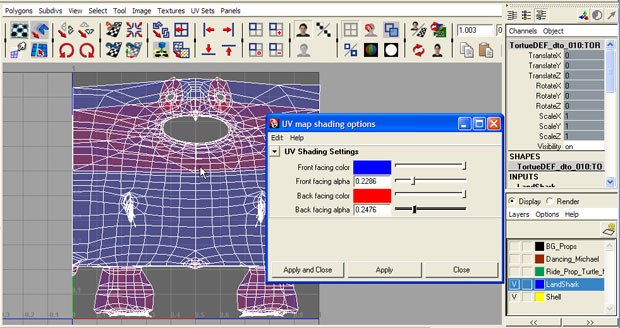VFXWorld begins its new excerpt series from Will Cunninghams book, The Magic of Houdini.

Maya 8 is the first release to come from the softwares new owner, Autodesk. The user community has been awash in rumors and hearsay for months now: only time will tell if this first release does anything to quiet those conversations. The main thrust of this upgrade is helping Maya to play nice with other Autodesk applications as well to streamline some of Mayas existing toolset. While these are not necessarily at the top of all users wish lists, they should prove useful should Autodesk continue to offer multiple apps, as they have promised to do with Maya and 3ds Max. The commitment to a continuation of both Maya and 3ds Max is the addition of the integrated FBX format, which allows users to import and export data between the two apps.
As computing power increases, users expect their software to take full advantage of whatever is the latest and greatest. Lately, 64-bit processors wore the it technology crown; that is until multi-core processors arrived on the scene and stole some of the thunder. LightWave was the first 3D app to take full advantage of 64-bit processing, and with this latest release, Maya becomes a 64-bit contender. The general advantage to using Maya on a 64-bit system is the ability to use more memory for complex, large scenes in combination with scalable multi-threading. There are additional specific advantages as well, such as speeding up subdivisions and skinning, two areas that always benefit from a speed boost. The 64-bit version is available for both Windows and Linux. No word on similar functionality for Mac OS X users.
Another new feature in Maya 8 is something called Transfer Polygon Attributes. Although not the best feature name, the functionality is likely to be welcome to a wide range of Maya users. The idea is fairly straightforward; users can now transfer a host of useful information from one mesh to another, even if their topology is markedly different. A good example of how this feature could be utilized is found in game development, where the use of differing levels of detail (these objects are commonly referred to as LODs) is essential. For the big, beefy version of the game set to run on the latest video cards, artists create characters that rival those used for film effects work. The artist then needs to create multiple lower resolution LODs that will work on progressively less capable machines. Every game is different, but an average of three LODs per character or object is common. The same rule applies to objects that are less important in the scene, such as objects off in the distance. Without this Transfer Polygon Attributes feature, artists had to do it all by hand, although there were a few shortcuts. Now, artists can skip ahead and have the software help them along even more, saving valuable time. Transferring UVs and vertex position are the key elements of the Transfer Polygon Attributes functionality.
The biggest issue with figuring out what is being offered for your money starts by distinguishing what is new. A few new and improved modeling tools have been included in this upgrade, including a few changes to some tool locations. On the list of new tools, users will find polygon bridge and the ability to insert multiple edge loops, both welcome, if late, additions to the Maya modeling toolset. Autodesk has emphasized many of the changes in Maya 8 in their promotional literature. While there are new features, a good deal of what is new are relocated or renamed tools. A case in point is UV layout. While the UV layout tools do offer some new functionality, the big change is that they have been rearranged. The change is part of a larger polygon menu revision, which now encompasses UV menus. Looking further, users will find additional revisions in the UV texture editor, this time in the form of moved buttons. Once again, users should review this change and decide whether moved buttons make for a worthy upgrade. One improvement that is certainly noteworthy is the new ability to reveal overlapping UVs by using color shading to show where overlaps are occurring.
Following what seems to be the company line with this release, the disappointing reorganization of menus and buttons can be found again in the modeling menu. The changes are meant to better reflect common workflows; however its hard to imagine the time spent on matching certain workflows as being more valuable than improvements to the modeling tools themselves. Autodesk should spend less energy tweaking their app to match specific workflows and more time opening it up to customization. Workflows differ considerably between productions, and with good reason. The processes for game development may be somewhat similar to visual effects, but they are still different. Moving things around might hurt one side as much as it helps another.
There are some actual new features for modelers, one of which is Polygon Bridge. This feature lets users select pairs of border edges and create a bridge of polygons in between. The polys that are created seamlessly become part of the original mesh. This is a feature seen in many other apps, one that is useful for creating alternate versions of objects with added geometry. A good example of this is a helmet to be worn by a futuristic soldier. One version of the helmet might be open-faced while an alternate would contain a glass shield. Creating the glass shield is as simple as selecting the edges on either side of the face and then activating the Bridge tool. The new polygons appear instantly and can be further tweaked to make the shield conform to the design. Another addition is the ability to create multiple edge loops when creating edge loops. This is likely to be a great time saver for modelers
A potentially important new feature, one that falls into workflow but still notable, is Geometry Caching. This allows users to cache the deformations on geometry so that it plays back and renders faster. This caching is editable and can be manipulated in Mayas Trax Editor. This opens up possibilities for blending a batch of vertex animations to create a new animation or to use the blending to find and fix problems in the sequences. This is one of those features that seem weighty, even if you cant put your finger on why just yet. It will likely show some legs as more users experiment with it and find new previously undiscovered uses. Another seemingly minor addition that may prove to be very useful to some users is the ability to override Maya viewports with another renderer. The most obvious use is for game developers; in fact, 3ds Max has had a similar feature for some time. The great thing about using an alternate renderer with Maya, or any 3D app, is the ability to make changes within a standard viewport and see those changes update immediately in the alternate render viewport. Subtle differences between renderers make all the difference; this instant feedback saves loads of time for the artists using it. Autodesk has gotten the ball rolling for programmers tasked with developing plug-ins to utilize this feature. Included with Maya 8 are OpenGL and Direct3D driver plug-ins.
The final bit of noteworthy news in Maya 8 is the cross functionality with Toxik, Autodesks film visual effects collaborative compositing tool. The main purpose of the cross functionality is to improve the overall workflow, a great idea but maybe not one all users will want to pay for. Those working on Toxik destined projects, can now use Mayas render layers to generate Toxik compositions, saving time rebuilding a scene within Toxik. Once exported, the composition can contain a wealth of Maya information, including associated image file references, render settings and layer blend modes. The 3D team can continue to tweak things in Maya while the compositors do their thing as the Maya specific information can be updated iteratively.
While this full version upgrade will be important to some users, others might find it more like a maintenance update. The good news is that Autodesk has come around in addressing previous oversights. From this perspective, Maya 9 should be an over-the-top, 3D revelation. Well know more a year or so from now.
Maya 8 is available now for Windows 32-bit and 64-bit, Linux and Mac OS X. Maya 8 Complete (Standalone) costs $1,999, Maya 8 Complete (Network) costs $2,999, Maya 8 Unlimited (Standalone) costs $6,999 and Maya 8 Unlimited (Network) costs $7,999. Upgrades from Maya 7 Complete cost $899 and $1,249 from Maya 7 unlimited.
Fred Galpern is currently the art manager for Blue Fang Games, located just outside Boston. He is also a Maya instructor at Northeastern University and a co-creator of the game development program at Bristol Community College. Since entering the digital art field more than ten years ago, Galpern has held management positions in several game and entertainment companies, including Hasbro and Looking Glass Studios. He began his art career in comicbooks and also has interactive, print and web design experience.











